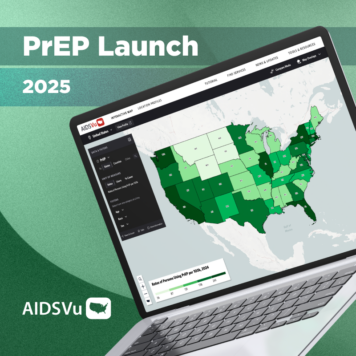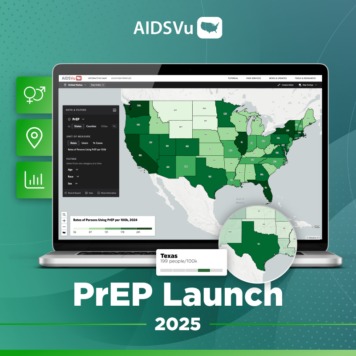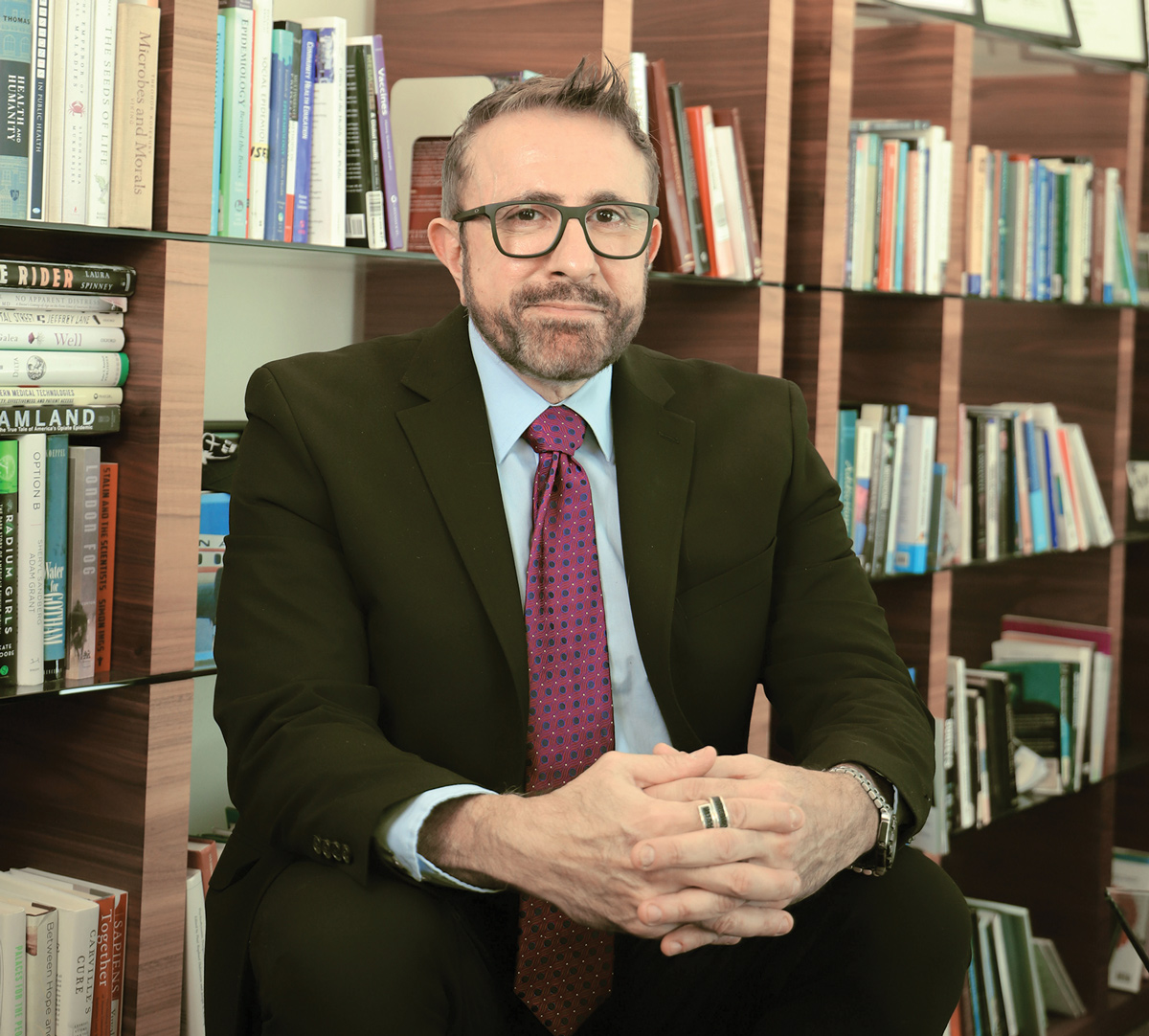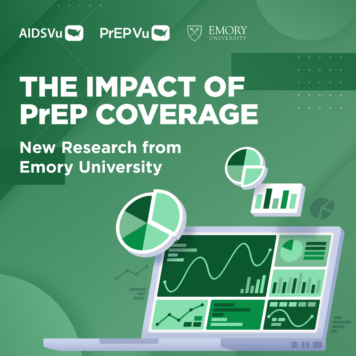Harlan Pruden is a First Nation Cree scholar and activist, an Educator at the British Columbia (BC) Center for Disease Control’s Chee Mamuk program, and the co-founder of the NorthEast Two-Spirit Society
Q: You have decades of experience as an HIV/AIDS activist for Native communities and previously served on the Presidential Advisory Council on HIV/AIDS and as the co-chair of the National Native HIV/AIDS Coalition. What prompted you to work in this field and how has your role changed in recent years?
On January 18th of this year, I celebrated 32 years of sobriety. One of the tenets of the group that I attended when working toward sobriety was service. At first, service starts off by volunteering to make coffee, then you start chairing meetings, and then about five years into my recovery I broadened that to become a community organizer. It was during this path to activism when I came out, which was in the late-eighties. Ever since then, I’ve been incredibly visible and as a result, I began organizing and holding spaces for my community, even when my community couldn’t hold space for themselves in fear of retribution or them not being out.
In 2002, I attended my first Two-Spirit gathering in Tulsa, Oklahoma. Up until that point everywhere I went I was always looking to see if native people were around and often there weren’t any. Then, I was looking around for people of color, gender diversity, and members of the LGBT community. Unconsciously, I believe I was trying to gauge whether or not these spaces were safe spaces just based on diversity. I remember going to my first Two-Spirit gathering and it struck me that it was late Saturday afternoon and I had yet to count who was in the room because my entire being was affirmed. Who I was, my sexual orientation, my gender identity, gender expression, but also my ingenuity.
After this, I decided New York City needed to have a space and support system like this, which is when I founded the NorthEast Two-Spirit Society. I’d always been involved in health policy and previously worked with a major political party within New York. This helped facilitate my community organizing and advocacy in trying to increase the visibility of my community and the issues that were impacting us.
I have never been someone who prayed in public. In the Cree belief system, the rocks are called our grandfather. Within the ontology, our grandfathers are the oldest living beings within our realm. This is why when we bring them into the lodge, we sing them in. Before I drink water, they drink. Before I eat, they eat. But because they are so old, they’re the wisest. And that’s why we go and ask them for prayer. Since I started going into the lodge, I realized that after the third or fourth round that the rocks were wise because the rocks weren’t trying to be the water. They weren’t trying to be the air. The rocks were solid and our grandfathers were solid in who they were. When I emerged from the lodge, I thought, “I don’t need to sing a song, nor do I need the power to pray in front of people to assert my ingenuity.”
My song is my policy work. My gift and my purpose are to do my policy work and to organize for my community. That’s when I started to understand, “No, I don’t need to sing. I don’t need to do a prayer and I’m no less of an Indian and my identity doesn’t have to emanate from me singing on a hand drum or me doing a prayer.” My ingenuity comes from my policy work and my organizing work and it is through embracing of that – my gift, my purpose, my medicine – that then led me to do this organizing and to try to address the issues, challenges, as well as the great things that are happening within my community.
This eventually led me to the White House and PACHA and a bunch of different spaces. This is who my song is, but I’ve embraced my song. We all have different songs and we just need to lean into our songs. We need to know our song, know what our gifts are, and what our purpose is.
Q: According to CDC, across the U.S. the rate of new HIV diagnoses among American Indian/Alaskan Natives is 1.6 times higher than new HIV diagnoses among White Americans. What are the driving factors causing this disparity?
I think it’s an incredibly complex issue and we should probably start with the 529 years of colonization. I believe there is a part of colonization that means we are always meant to feel less than. I see that even within the structure of your question – where the control is White Americans. We are always being compared to White Americans. However, try as I might, I’m never going to be White.
I tease that out because I have written these questions and I’ve written these statements, but I now got into a place of asking why are we being compared to something that we will never be? I think that this line of thinking is very pervasive in our system. There’s also being pushed to the margin and marginalization.
Additionally, there is stigma in our communities around sex and talking about sexuality. We need to take both a deficit and an asset-based approach to this conversation of looking at coping strategies that harm our health.
For example, when I was drinking every day, I got drunk to deal with my shitty lot in life. Every day I drank, it allowed me to live another day, which essentially was a way of surviving. I think that we must start looking at health-harming coping strategies like alcoholism or substance use, but understand that they are coping strategies that we use to deal with the 529 years of colonization and the shitty world that we were born into.
I remember marching in a Vancouver pride parade and one of the dancers had a little bout of heat exhaustion. A few paramedics and first responders were called in to do a diagnosis and it was through that diagnosis that we found out that this individual had been not taking their HIV medication for the past 10 days. I then asked why is it that someone, who has full coverage for medication, couldn’t walk to the nearest community pharmacy to pick up their meds. I think this is an instance that illustrates what happens when a community is beaten down, made to feel inferior or that we’re not supposed to be here. This leads us to create these internal messages that we don’t deserve to live.
To answer this question – it’s a very complex issue because I don’t think there is just one cause. This has been happening for over 529 years and within this context, this is but one symptom of a much broader conversation. But I also take solace in that the remedy must equal the actual harm.
For example, when someone gashes their leg open, we don’t hand them a Band-Aid – instead, we rush them to surgery and give them stitches. For folks who have been ripped from their reservations, put into boarding schools where they literally had their Indian beaten out of them, forced sterilization of our Indigenous men and women, an apartheid system that forced us from our land and put into reservations, that remedy must mirror the problem. We must take on the conversation of the 529 years of colonization, which can’t be fixed using a Band-Aid.
Q: Last year, the Indian Health Service (IHS) and Cherokee Nation Health Service announced the launch of a new HIV pilot project as a part of the federal Ending the HIV Epidemic: A Plan for America (EHE) initiative. What steps can the federal government take to properly ensure the EHE initiative sees success specifically within Native communities?
I think that we have to start questioning systemic, ontological, and methodological violence – which is a fancy way of saying that Indigenous people have our own stories, we have our own ways, which have endured the test of time.
I think it is good that within this initiative they are meeting with the Cherokee nation and saying, “Hey Cherokee nation, what do you think needs to be done?” There should be a framework that is given so that you can then approach the Osage, Winnebago, or Choctaw nations, to ask for guidance. The federal government has to learn when to be quiet and realize they need to listen.
I’m not supposed to be here. If previous policies and acts of genocide were successful, we Native people would not be here today. Every breath that I take is an act of survival and every exhale is an act of resistance. But in that there is surviving, there’s resilience. I think that the federal government doesn’t understand how incredibly resilient we are and how we have adapted and survived in spite of all of the federal policies and hatred that has been poured upon us as native people.
We should start tapping into what have we used to survive. This active type of resistance draws upon those and centers that reality and that experience. I think then we will begin to cure a whole host of issues within our community.
Q: March 20 is National Native HIV/AIDS Awareness Day and this year’s theme is “Resiliency + Action: Ending the HIV Epidemic in Native Communities.” How can we all do more to put this message into action and better support ending this epidemic in Native communities?
I think that for non-Native people, it is for them to understand the history and the unique positionality of Indigenous people. Additionally, non-Native people need to understand their privilege and how they often get passes. The entire system is set up for them to succeed and they have either passively or actively gained benefits from that system. Passivity is like when non-native white people get up for a promotion or a job, they pat themselves on the back, not understanding that the entire educational system has been set up to benefit them. Or when a white person gets a promotion, they then pat themselves on the back not understanding that more than likely the HR people as well as the people that are making decisions look like them. Non-native people need to do the work to understand their privilege. That’s for them to do.
For us as native people, we can choose to begin or continue a healing journey from a history of 529 years of colonization. I think this journey how we start feeling good about ourselves. The work I did with the Northeast Two-Spirit Society in New York City was all about social, cultural, and recreational events to celebrate your ingenuity. The assumption that I worked under is that anything that instills greater cultural pride has a direct and positive impact on your self-esteem. When you have higher self-esteem, then you will make better decisions impacting all. You have to love, respect, and honor who you are. If you do that, you’re going to make healthier decisions and you’re going to make sounder decisions.
This has to be community-based, gathering and convening and finding the strength in one another. This resilience in action I think is the coming together and centering of our cultural pride. However, this is only half of the equation. Non-Indigenous people have to start doing some reflectiveness on the history of the land they are on.




